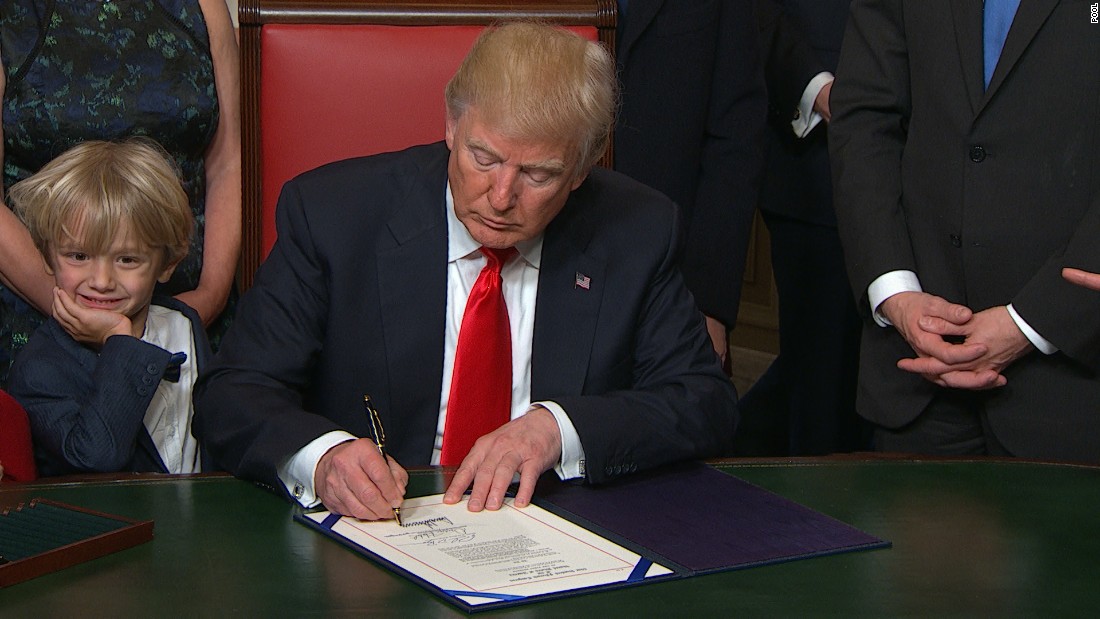Is Trump Right or Left Handed?
Former US President Donald Trump is right-handed. This is evident in numerous photos and videos of him signing documents, eating, and performing other tasks that require the use of one's dominant hand.
Handedness is a complex trait that is influenced by both genetics and environment. While most people are right-handed, there is a small percentage of the population who are left-handed. There is no definitive answer as to why some people are right-handed and others are left-handed, but there are a number of theories. One theory is that handedness is determined by the brain's lateralization, or the way that the brain's hemispheres are specialized for different functions. In right-handed people, the left hemisphere of the brain is dominant for language and logic, while the right hemisphere is dominant for spatial reasoning and visual-motor skills. In left-handed people, the opposite is true.
Another theory is that handedness is determined by prenatal factors. Studies have shown that exposure to certain hormones in the womb can influence the development of handedness. For example, one study found that boys who were exposed to high levels of testosterone in the womb were more likely to be left-handed.
Regardless of the cause, handedness is a stable trait that does not change over time. People who are right-handed will typically remain right-handed throughout their lives, and people who are left-handed will typically remain left-handed throughout their lives.
is trump right or left handed
Handedness and Brain Lateralization
Handedness and Prenatal Factors
Handedness and Genetics
is trump right or left handed
Handedness is a complex trait that is influenced by both genetics and environment. While most people are right-handed, there is a small percentage of the population who are left-handed. There is no definitive answer as to why some people are right-handed and others are left-handed, but there are a number of theories.
- Brain Lateralization: In right-handed people, the left hemisphere of the brain is dominant for language and logic, while the right hemisphere is dominant for spatial reasoning and visual-motor skills.
- Prenatal Factors: Exposure to certain hormones in the womb can influence the development of handedness.
- Genetics: Handedness is a heritable trait, but the exact genes that are involved are not fully understood.
- Culture: In some cultures, there is a strong preference for right-handedness, and left-handed children may be forced to use their right hand.
- Environment: Certain environmental factors, such as the availability of left-handed tools, can also influence handedness.
- Chance: Some researchers believe that handedness is simply a matter of chance.
These are just some of the key factors that can influence handedness. It is likely that a combination of these factors, rather than any single factor, determines whether a person is right-handed or left-handed.
Brain Lateralization
This theory suggests that handedness is determined by the brain's lateralization, or the way that the brain's hemispheres are specialized for different functions. In right-handed people, the left hemisphere of the brain is dominant for language and logic, while the right hemisphere is dominant for spatial reasoning and visual-motor skills. This lateralization of function is thought to be responsible for the fact that most people are right-handed.
- Language and Logic: The left hemisphere of the brain is responsible for language and logic. This means that right-handed people are typically better at tasks that require verbal skills, such as reading, writing, and speaking.
- Spatial Reasoning and Visual-Motor Skills: The right hemisphere of the brain is responsible for spatial reasoning and visual-motor skills. This means that right-handed people are typically better at tasks that require visual-spatial skills, such as drawing, playing sports, and navigating.
It is important to note that this is just a theory, and there is still much that is not known about the causes of handedness. However, the brain lateralization theory is one of the most widely accepted explanations for why some people are right-handed and others are left-handed.
Prenatal Factors
Research suggests that exposure to certain hormones in the womb can influence the development of handedness. Studies have shown that boys who are exposed to high levels of testosterone in the womb are more likely to be left-handed. This is thought to be because testosterone can affect the development of the brain's lateralization, or the way that the brain's hemispheres are specialized for different functions.
- Testosterone and Handedness: Testosterone is a hormone that is produced in greater amounts in males than in females. Studies have shown that boys who are exposed to high levels of testosterone in the womb are more likely to be left-handed. This is thought to be because testosterone can affect the development of the brain's lateralization, or the way that the brain's hemispheres are specialized for different functions.
- Estrogen and Handedness: Estrogen is a hormone that is produced in greater amounts in females than in males. Studies have shown that girls who are exposed to high levels of estrogen in the womb are more likely to be right-handed. This is thought to be because estrogen can also affect the development of the brain's lateralization.
- Other Hormones: Other hormones, such as progesterone and cortisol, may also play a role in the development of handedness. However, more research is needed to confirm this.
It is important to note that these are just some of the factors that can influence handedness. It is likely that a combination of genetic, environmental, and prenatal factors all play a role in determining whether a person is right-handed or left-handed.
Genetics
Handedness is a heritable trait, meaning that it is passed down from parents to children. Studies have shown that the concordance rate for handedness in monozygotic (identical) twins is about 90%, while the concordance rate for handedness in dizygotic (fraternal) twins is about 50%. This suggests that genetics play a significant role in determining handedness.
However, the exact genes that are involved in handedness are not fully understood. Researchers have identified a number of candidate genes, but no single gene has been definitively linked to handedness. It is likely that handedness is a polygenic trait, meaning that it is influenced by multiple genes.
Despite the fact that the exact genes that are involved in handedness are not fully understood, there is evidence to suggest that genetics play a significant role. This is important because it can help us to better understand the causes of handedness and develop new treatments for handedness disorders.
Culture
In some cultures, there is a strong preference for right-handedness. This preference is often rooted in religious or cultural beliefs. For example, in many Asian cultures, the left hand is considered to be unclean. As a result, left-handed children in these cultures may be forced to use their right hand, even if it is not their natural preference.
This cultural preference for right-handedness can have a number of negative consequences for left-handed people. For example, left-handed children who are forced to use their right hand may be more likely to develop learning disabilities, such as dyslexia and ADHD. They may also be more likely to experience anxiety and depression.
Fortunately, there is a growing awareness of the importance of accommodating left-handed people. In many countries, schools and workplaces are now providing left-handed students and employees with the resources they need to succeed. This includes providing left-handed desks, chairs, and writing tools.
Donald Trump is right-handed. He has never publicly stated why he is right-handed, but it is likely that he is right-handed because he grew up in a culture that values right-handedness. It is also possible that he is right-handed because of genetics or prenatal factors.
Environment
The availability of left-handed tools can have a significant impact on the development of handedness. For example, a left-handed child who is forced to use right-handed tools may be more likely to develop mixed handedness or even become right-handed. This is because the child will have to adapt their natural movements to the right-handed tools, which can be difficult and frustrating.
In contrast, a left-handed child who has access to left-handed tools will be able to develop their natural handedness without any hindrance. This can lead to better fine motor skills and coordination, as well as improved academic performance.
Donald Trump is right-handed, but it is possible that he would have been left-handed if he had been raised in a different environment. For example, if he had been raised in a culture that values left-handedness, or if he had access to left-handed tools from a young age, he may have developed a preference for using his left hand.
The availability of left-handed tools is an important environmental factor that can influence the development of handedness. It is important to ensure that left-handed children have access to the tools they need to succeed.
Chance
While genetics, prenatal factors, culture, and environment all play a role in the development of handedness, some researchers believe that chance may also be a factor. This is because there is no single gene that has been definitively linked to handedness, and there is a significant amount of variation in handedness within families. Additionally, studies have shown that the handedness of identical twins is not always the same, which suggests that genetics cannot fully explain handedness.
- Random Variation: Handedness may simply be a matter of random variation. This means that there is no specific cause for why some people are right-handed and others are left-handed. It is simply a matter of chance.
- Epigenetics: Epigenetics is the study of how environmental factors can affect gene expression. It is possible that epigenetic factors could play a role in the development of handedness. For example, exposure to certain toxins in the womb could increase the likelihood of a child being left-handed.
- Other Factors: There are a number of other factors that could potentially contribute to the development of handedness, including birth order, birth weight, and maternal health. However, more research is needed to determine the role of these factors.
It is important to note that the chance theory of handedness is just one of several theories. There is still much that is not known about the causes of handedness. However, the chance theory is a reminder that there is still much that we do not know about the human brain and body.
FAQs about "is trump right or left handed"
Question 1: Is Donald Trump right-handed or left-handed?
Answer: Donald Trump is right-handed.
Question 2: Why are some people right-handed and others left-handed?
Answer: Handedness is a complex trait that is influenced by a combination of genetics, prenatal factors, culture, and environment. There is no single gene that has been definitively linked to handedness, and there is a significant amount of variation in handedness within families. Additionally, studies have shown that the handedness of identical twins is not always the same, which suggests that genetics cannot fully explain handedness.
Conclusion
In conclusion, the question of "is trump right or left handed" is a complex one that cannot be definitively answered. While genetics, prenatal factors, culture, and environment all play a role, there is still much that is not known about the causes of handedness. It is likely that a combination of all of these factors contributes to the development of handedness.
The study of handedness is a fascinating one that can tell us a lot about the human brain and body. By continuing to research handedness, we can gain a better understanding of ourselves and our place in the world.
Article Recommendations



ncG1vNJzZmiclaK8b7HNnqmgoaOirrPAjaemaKqVobKiv8SsaGlnmah6tb7UpqdmqpmctbV5zqtkpZ2WqXqprc2dnJ1mmKm6rQ%3D%3D